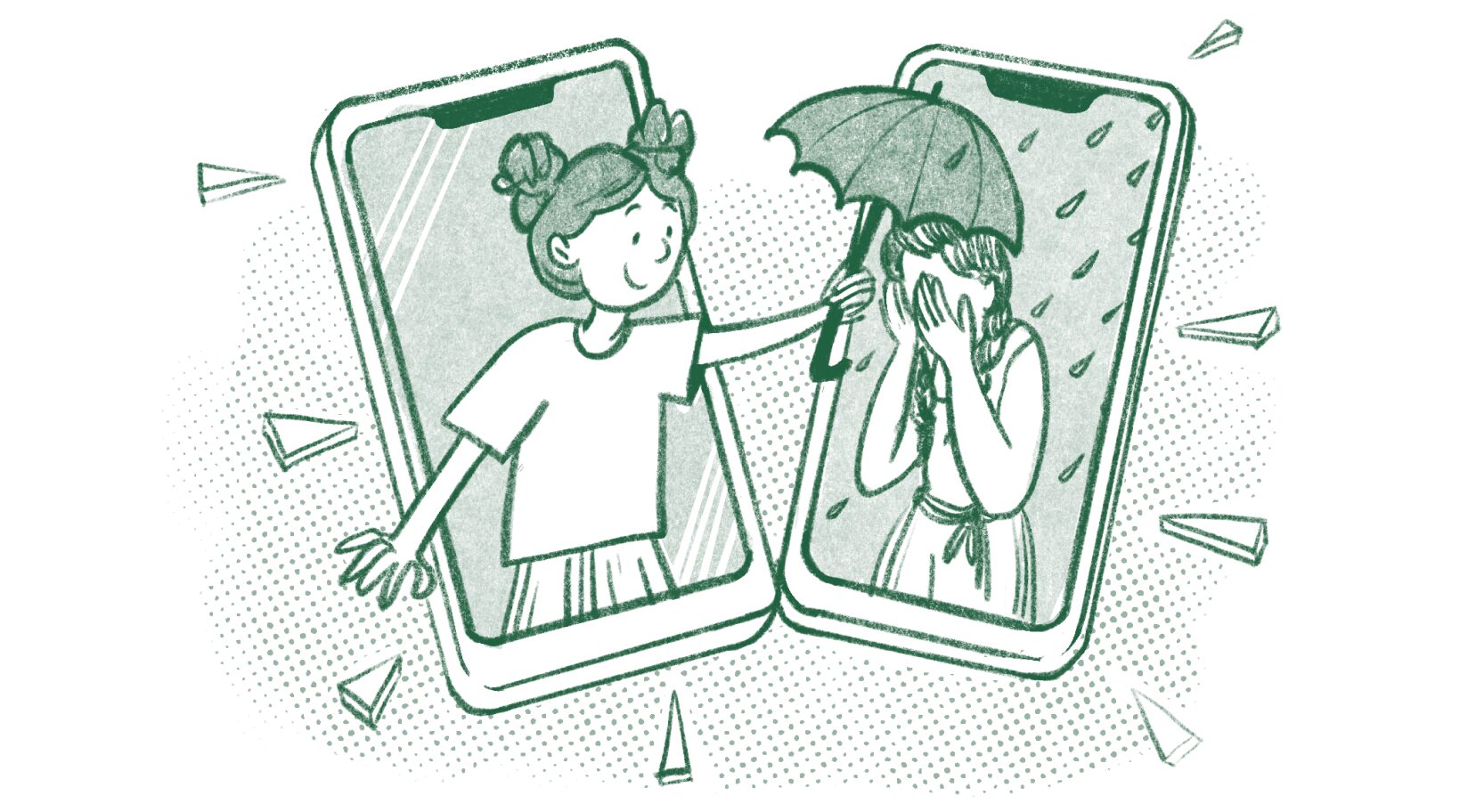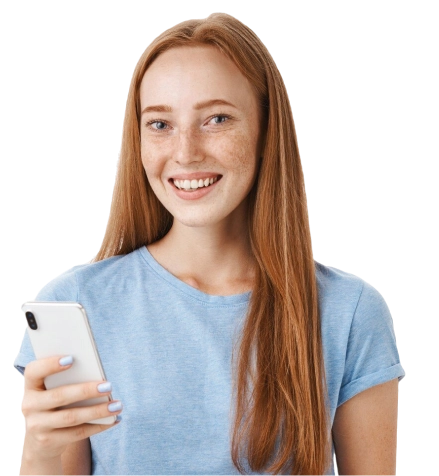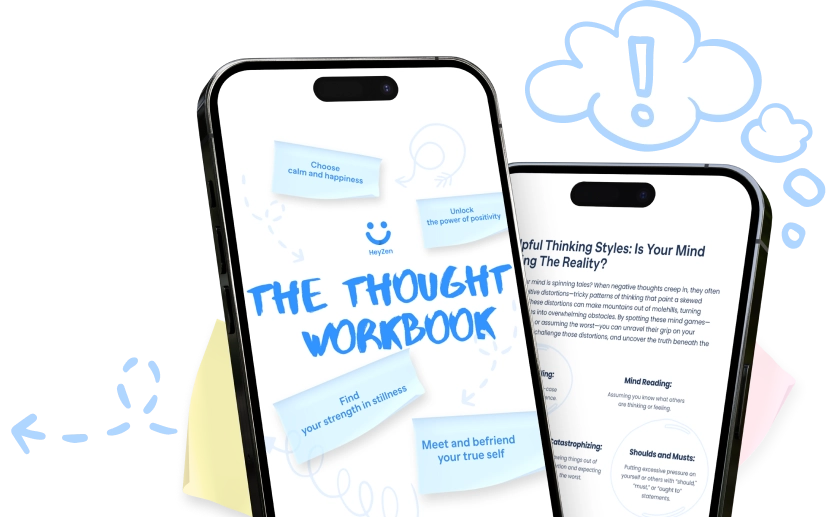15 Best Trauma Apps That Help You Heal: Ultimate 2025 Guide for PTSD Recovery

Living with trauma and PTSD can feel overwhelming, but you’re not alone on your journey to healing. Thanks to advances in technology, support and guidance are now available right at your fingertips through specialized mobile applications.
These trauma-focused apps offer science-based techniques and tools to help you manage symptoms, track your progress, and work through challenging moments. Whether you’re currently in therapy or taking your first steps toward recovery, these digital companions can provide valuable resources for understanding and coping with post-traumatic stress. From self-help education to treatment supplements that work alongside healthcare providers, there’s an app designed to meet your specific needs.
Key takeaways
- PTSD affects 1 in 25 people, with specialized mobile apps now offering digital support tools to help manage symptoms and enhance recovery.
- PTSD often coexists with other mental health problems, mental illnesses, and anxiety disorders, so it requires professional medical treatment.
- Top-rated free PTSD apps like PTSD Coach, CPT Coach, and PE Coach provide evidence-based features including symptom tracking, guided exercises, and crisis resources.
- Essential features to look for in trauma apps include guided meditations, symptom-tracking capabilities, CBT techniques, and easy access to emergency helplines.
- For maximum benefit, users should establish a regular app routine, combine app use with professional therapy, consistently track progress, and customize features to their needs.
- Different apps target specific user groups: VetChange for veterans, HeyZen for childhood trauma survivors, and TraumaConnect for healthcare professionals.
- The future of PTSD apps involves AI, machine learning, and emerging technologies like VR/AR to provide more personalized and effective trauma management solutions.
Understanding PTSD: symptoms, types, and treatment
Trauma vs. PTSD
Trauma refers to the emotional response that occurs after a distressing event. This can include a variety of situations such as accidents, natural disasters, or even the loss of a loved one. Everyone experiences trauma differently; while some people may recover and heal over time, others might find that their feelings and reactions linger long after the event has passed. It’s crucial to recognize that trauma is a natural reaction to overwhelming life experiences and does not always develop into a mental health disorder.
On the other hand, PTSD is a specific mental health condition that can occur after someone has experienced a traumatic event. Not everyone who experiences trauma will develop PTSD, but for those who do, it can manifest in several debilitating ways. Symptoms of PTSD often include flashbacks, nightmares, severe anxiety, and uncontrollable thoughts about the event. These symptoms can significantly impact a person’s daily life, relationships, and overall well-being.
Symptoms of PTSD and its types
Common PTSD symptoms include:
- Re-experiencing symptoms: Flashbacks, nightmares, intrusive memories.
- Avoidance behaviors: Staying away from trauma-related places or situations.
- Heightened arousal: Difficulty sleeping, increased irritability, hypervigilance.
- Negative thoughts: Constant overthinking, changes in mood, feelings of guilt, emotional numbness.
- Chronic procrastination: Putting off tasks to avoid failure and negative emotions.
The most common types of PTSD are the following:
- Acute PTSD: Symptoms lasting less than 3 months.
- Chronic PTSD: Symptoms persisting beyond 3 months.
- Complex PTSD: Resulting from prolonged or repeated trauma.
- Delayed-onset PTSD: Symptoms emerging 6+ months after trauma.
The importance of professional guidance alongside app usage
While there are many tools available — including trauma apps designed to assist in daily coping strategies — none should ever replace the importance of working with a qualified mental health professional. Trained therapists and counselors not only understand the complexities of trauma responses but also offer a safe environment where individuals can explore their feelings and experiences without judgment.
The therapeutic relationship established with a mental health professional can also foster a sense of accountability and encouragement that is vital for recovery. This relationship can empower individuals to explore difficult emotions and memories in a supportive setting, making it easier to process traumatic experiences.
Top-rated free PTSD apps
Modern technology offers specialized apps to support individuals managing PTSD symptoms. These evidence-based mobile applications combine therapeutic techniques with practical tools for daily symptom management.
PTSD Coach
PTSD Coach stems from a collaboration between the VA’s National Center for PTSD and the DoD’s National Center for Telehealth & Technology. This app serves as a comprehensive resource for PTSD education and management.
Features
- PTSD Checklist-Civilian (PCL-C) assessment tool.
- Interactive education modules about PTSD and treatment options.
- Customizable relaxation techniques with personal photos and music.
- Anger management exercises and positive self-talk tools.
- Direct links to crisis support and professional resources.
CPT Coach
CPT Coach functions as a digital companion for individuals engaged in Cognitive Processing Therapy with a mental health provider.
Features
- Digital CPT worksheets and assignments.
- Built-in symptom-tracking system.
- Automated practice planning tools.
- Session reminder notifications.
- Progress monitoring capabilities.
PE Coach
PE Coach integrates directly with Prolonged Exposure therapy sessions conducted by trained mental health professionals.
Features
- Guided breathing exercises.
- In vivo exposure hierarchy tools.
- Session recording capabilities.
- Homework assignment tracking.
- SUDS rating scale assessments.
Stop, Breathe, Think
Stop, Breathe, Think focuses on mindfulness-based approaches to managing PTSD symptoms.
Features
- Guided meditation sessions.
- Emotion check-in tools.
- Progress tracking dashboard.
- Customizable meditation timers.
- Stress-reduction exercises.
PTSD Coach Australia
PTSD Coach Australia adapts core PTSD management tools for the Australian healthcare context.
Features
- Australia-specific crisis resources.
- Local support service directory.
- Cultural considerations for Indigenous users.
- Regional emergency contacts.
- Australian mental health guidelines integration.
Specialized PTSD apps
Beyond MST
It’s a free app that aims to help people who survived a Military Sexual Assault (MST).
Features
- 30+ specialized tools to manage symptoms and improve life quality after MST.
- Self-paced recovery and self-care exercises.
- Support resource directory.
- Progress tracking capabilities.
Pricing
Free access to all features.
Mindfulness Coach
The app aims to reduce stress and soothe anxiety with mindfulness sessions.
Features
- 12 mindfulness exercises and meditation sessions.
- Mindfulness practice logs.
- Goal-setting tools.
- Educational content on mindfulness.
Pricing
Free for all users
VetChange
It’s an app developed specifically for veterans with PTSD who have problems with drinking.
Features
- Tools for quitting drinking and managing alcohol use.
- PTSD symptom monitoring.
- Goal-setting framework.
- Behavioral change tools.
- Support network integration.
- Progress tracking analytics.
Pricing
Free download with complete functionality.
Features to look for in PTSD apps
Effective PTSD apps integrate essential features that support trauma recovery and symptom management. These key components work together to provide comprehensive support for users managing post-traumatic stress.
Guided meditations and breathing exercises
Top-rated PTSD apps offer structured meditation sessions and breathing techniques for immediate stress relief. These features include diaphragmatic breathing exercises, progressive muscle relaxation routines, and mindfulness practices that help regulate emotional responses during triggering situations.
Symptoms tracking
Digital symptom monitoring tools enable users to record their PTSD symptoms and identify patterns over time. Essential tracking features include:
- Daily mood logs with customizable parameters.
- Sleep pattern documentation.
- Trigger event recording.
- Progress charts showing symptom changes.
- Custom notes for therapy sessions.
Cognitive-behavioral therapy (CBT) techniques
Evidence-based CBT tools help users reshape negative thought patterns related to trauma. Key CBT features include:
- Thought-challenging exercises.
- Behavioral activation prompts.
- Grounding techniques for flashbacks.
- Interactive journaling tools.
- Exposure therapy support materials.
Crisis resources and helplines
- One-touch emergency contact buttons.
- Direct links to crisis hotlines.
- Local mental health resource directories.
- Personal safety plan creators.
- Emergency contact information storage.
Limitations of PTSD apps: when apps are not enough
1. Lack of personalized care
These apps often deliver generalized content that may not be tailored to individual experiences or specific needs. The multifaceted nature of PTSD means that each person’s journey through healing is unique. What works for one person might not resonate with another, making it crucial to seek out personalized treatment options alongside app usage.
2. No human interaction
While some platforms are designed to connect users with therapists or support groups, many others are self-help tools that rely heavily on user engagement. For those struggling with severe trauma, the absence of a comforting voice or a supportive hand can be a significant setback. Therapy offers a safe space for vulnerability and learning through interpersonal connection, something that a digital platform simply cannot replicate. The nuances of human emotion, empathy, and professional guidance are essential components of healing that an app might not adequately provide.
3. A barrier to the healing process
While convenience is one of the appealing facets of trauma apps, it can lead to avoidance behaviors. If individuals start to prioritize app usage over engaging in face-to-face therapy or personal coping strategies, they may miss out on critical therapeutic moments. Moreover, the digital divide—the gap between those who have access to technology and those who do not—can create disparities in resources available for trauma recovery. It’s vital to remember that while technology can offer tremendous support, it’s not a substitute for comprehensive care, which often includes professional therapy, community support, and various coping strategies tailored to one’s experiences.
So, trauma apps can be valuable tools in the toolkit for managing PTSD, but they should complement, not replace, professional help and community support. Understanding the limitations of these apps, we can make informed choices about their mental health journey, ensuring that they engage with a broad spectrum of resources—both technological and human.
Privacy and security considerations
Mental health apps handle sensitive personal information, making privacy and data security essential components of any trauma-focused application.
Data protection in mental health apps
Mental health apps collect personal information, including mental states, emotions, behaviors, and therapeutic progress. Leading trauma apps implement several protective measures:
- End-to-end encryption safeguards data transmission between your device and app servers.
- HIPAA compliance ensures adherence to healthcare privacy standards in storing personal health information.
- Anonymized data removes identifying details from usage statistics and research data.
- Local storage options keep sensitive information directly on your device rather than on cloud servers.
- Regular security audits identify and address potential vulnerabilities in the app’s infrastructure.
- Access controls limit data visibility to authorized healthcare providers and support staff.
- Data deletion protocols permanently remove your information when requested.
How to choose a safe app?
When it comes to selecting the right trauma app to help you navigate through challenging emotions and experiences, safety should be a top priority. With so many options available, it’s essential to ensure that the app not only meets your personal needs but also provides a secure environment for your mental health journey. Here are a few key factors to consider when evaluating the safety of a trauma app:
1. Take a close look at the app’s privacy policy.
This document should clearly outline how the app collects, uses, and shares your personal information. Reputable apps will handle your data with care, using encryption to protect your sensitive information. Make sure the app doesn’t sell your data to third parties, as this can compromise your privacy. If a privacy policy is difficult to find or seems vague and incomplete, it might be best to steer clear of that app.
2. Consider the qualifications of the professionals behind the app.
Apps developed by licensed therapists, psychologists, or reputable organizations in the mental health field are generally safer and more reliable. Look for information about their credentials and see if they provide any evidence-based practices integrated into the app. This can include cognitive-behavioral therapy (CBT) techniques or mindfulness exercises, which indicate that the app is grounded in scientifically backed methods. It adds an extra layer of trust knowing that the content was crafted by someone with the appropriate expertise.
3. Pay attention to user reviews and ratings.
While reading about others’ experiences can provide insight into an app’s effectiveness and safety, try to focus on reviews that mention specific experiences related to privacy and support. Are users consistently reporting secure environments and positive mental health outcomes? Engaging with community forums related to mental health can also provide recommendations from individuals who have used these apps firsthand. A solid reputation among your peers often points to a good choice, so take your time to research and find the app that feels right for you.
Where to start in the healing journey?
1. Getting over psychological barriers
When it comes to dealing with trauma, one of the first hurdles many individuals face is acknowledging the presence of psychological barriers. These barriers can manifest in various ways, including feelings of shame, guilt, or even denial. It’s important to recognize that these feelings are entirely normal parts of the healing process. The key is to approach them with compassion and understanding. The more you become attuned to these emotions, the easier it will be to start addressing the underlying issues related to your trauma. This self-awareness is often the first step towards recovery and can be significantly supported by utilizing trauma-focused apps that guide you through this introspective journey.
2. Connecting to support groups in real life
After experiencing trauma, it can often feel isolating, as if no one truly understands what you’re going through. However, tapping into support groups—whether they’re local meet-ups or online communities—can be a transformative experience! Many trauma apps offer features that allow users to find and join local support groups, increasing their chances of making meaningful connections with others who have faced similar hardships.
These support groups can be invaluable for several reasons. They not only provide a safe space where individuals can share their experiences and feelings, but they also foster a sense of belonging and community. It’s comforting to know that you’re not alone in your journey. Engaging with others who have experienced trauma can help diminish feelings of distress, as participants often share coping strategies and resources.
3. Getting ready to visit a psychotherapist
Taking the step to visit a psychotherapist is a monumental decision. It takes courage to recognize that we need support and that our mental well-being is just as important as our physical health. Getting psychologically ready for this journey involves several preparatory steps that can make the experience more comfortable and effective. First, it’s helpful to acknowledge any feelings of anxiety, fear, or uncertainty you might have about therapy. These emotions are entirely normal, and recognizing them can alleviate some of the pressure you might feel. It’s crucial to remind yourself that seeking help is a sign of strength, not weakness.
Before your first appointment, consider spending some time reflecting on what you hope to achieve through therapy. You might find it beneficial to journal about your feelings, experiences, and the specific issues that prompted you to seek help. By organizing your thoughts and clarifying your goals, you’re not only preparing yourself but also providing your therapist with a clearer picture of your needs, which can facilitate a more productive dialogue from the very start. It’s okay to include things you might want to discuss that you may feel are embarrassing or trivial; no topic is too small when it comes to your mental health.
Using PTSD apps effectively: 4 steps
Getting the most from PTSD apps requires a structured approach that aligns with your recovery goals. Here’s how to maximize their benefits in your healing journey.
1. Set up a routine
- Create dedicated times for app engagement in your daily schedule.
- Set 2-3 specific periods during the day – morning, afternoon or evening – to practice coping techniques or complete symptom check-ins.
- Enable app notifications to stay consistent with your selected schedule times.
2. Combine app use with therapy
- Share your app data with your mental health provider to enhance treatment sessions.
- Record symptoms, triggers or progress in the app before appointments to reference during discussions.
- Practice therapeutic techniques from sessions using relevant app features between visits.
3. Track progress over time
- Document your symptoms, moods, and reactions daily using the app’s tracking features.
- Note patterns in your triggers and responses across weeks or months to identify effective coping strategies.
- Review tracked data monthly to recognize improvements and areas needing additional focus.
4. Customize features
- Personalize app settings to match your specific needs and symptoms.
- Select relaxation exercises that work best for you—breathing techniques, guided imagery, or progressive muscle relaxation.
- Save frequently used tools in easily accessible locations within the app interface.
PTSD apps for different user groups
PTSD apps target specific groups with tailored features that address unique trauma experiences. Each app provides specialized tools based on the distinct needs of veterans, military personnel, childhood trauma survivors, or healthcare professionals.
The best app for veterans: VetChange
VetChange helps veterans address combat-related PTSD symptoms and manage alcohol use. The app features goal-setting tools to reduce drinking, customizable tracking systems to monitor PTSD triggers, interactive modules about alcohol-PTSD connections plus direct links to crisis support services. VA Boston Healthcare System collaborated with Boston University to create this evidence-based mobile solution.
The best app for childhood trauma survivors: HeyZen
HeyZen incorporates age-appropriate coping techniques for processing childhood trauma. The app provides:
- Guided visualization exercises designed for triggering memories.
- Psychological podcasts for deep emotional processing.
- Various types of meditation sessions lasting from 3 to 15 minutes.
- Articles and workbooks that support trauma recovery.
- Breathing exercises and SOS meditations to quickly cope with panic attacks, fear, or anxiety.
The best app for healthcare professionals: TraumaConnect
The app helps doctors collaboratively help their patients by correctly assessing their symptoms and selecting the right mental health support and treatment options. It also includes:
- Evidence-based assessment scales for symptom tracking.
- Treatment planning templates aligned with CPT protocols.
- Progress monitoring dashboards for patient outcomes.
- Secure messaging system for patient communication.
- Resource library with trauma-informed intervention guides.
Future of PTSD apps
Digital mental health solutions continue to evolve with technological advancements. Advanced algorithms analyze user data to provide more personalized support for trauma management.
AI and machine learning in PTSD management
Artificial intelligence enhances PTSD apps through pattern recognition in user behavior data. Machine learning algorithms identify triggers by analyzing symptom logs, sleep patterns, and heart rate variations to create customized intervention strategies. Natural language processing enables chatbots to provide 24/7 emotional support through contextually appropriate responses based on user interactions.
Other emerging technologies in mental health
Virtual reality exposure therapy apps simulate trauma-related scenarios in controlled environments. Biometric sensors integrate with apps to monitor physical stress indicators like heart rate variability or skin conductance. Augmented reality features guide users through grounding techniques by overlaying calming visual elements onto their surroundings through smartphone cameras.
| Emerging Technology | Application in PTSD Treatment |
| AI/ML | Pattern recognition, personalized interventions |
| VR | Exposure therapy, scenario simulation |
| Biometrics | Stress monitoring, trigger identification |
| AR | Guided grounding exercises, visual aids |
| Natural Language Processing | 24/7 emotional support chatbots |
Integrating apps into your PTSD management plan
Living with PTSD isn’t easy, but you’ve got powerful tools right at your fingertips. These apps can be valuable companions on your healing journey, offering support whenever and wherever you need it.
Remember that while these digital tools are incredibly helpful, they work best as part of a comprehensive treatment plan. Choose an app that resonates with your needs, customize its features, and make it a consistent part of your daily routine.
You’re taking an important step by exploring these resources. Whether you’re just starting out or already in therapy, these apps can help you build resilience, track your progress, and maintain hope. Your path to healing is unique, and having the right tools can make all the difference.
FAQ
What are PTSD apps, and how do they help with trauma recovery?
PTSD apps are mobile applications designed to help individuals manage trauma symptoms and support recovery. They offer features like symptom tracking, relaxation exercises, coping strategies, and crisis support. These apps serve as supplementary tools to professional treatment, helping users practice therapeutic techniques and monitor their progress.
How common is post-traumatic stress disorder in the US?
PTSD affects approximately 8.3% out of 82.7% who experienced a traumatic event. The condition can manifest in different forms, including acute, chronic, complex, and delayed-onset PTSD, each with distinct characteristics and treatment needs.
What key features should I look for in a PTSD app?
Essential features include guided meditation and breathing exercises, symptom-tracking tools, cognitive-behavioral therapy (CBT) techniques, and crisis resources. Look for apps that offer customizable features, emergency contact buttons, and direct links to crisis hotlines for immediate support when needed.
Are PTSD apps a replacement for professional therapy?
No, PTSD apps are not substitutes for professional mental health care. They are designed to complement traditional therapy by reinforcing therapeutic techniques, providing additional support between sessions, and offering educational resources. Best results are achieved when apps are used alongside professional treatment.
Which PTSD apps are highly recommended and free?
PTSD Coach leads the category, offering comprehensive tools for free on iOS and Android. Other recommended free apps include CPT Coach, PE Coach, Stop, Breathe, Think, and PTSD Coach Australia. Each app provides unique features tailored to different aspects of trauma recovery.
How can I maximize the benefits of using PTSD apps?
Set up a regular routine for app engagement, share app data with your mental health provider, consistently track your progress, and customize features to match your needs. Regular use and integration with your overall treatment plan will help maximize the app’s effectiveness in your recovery journey.
What new technologies are emerging in PTSD app development?
The future of PTSD apps includes AI and machine learning for personalized support, virtual reality exposure therapy, biometric stress monitoring, and augmented reality features. These innovations aim to provide more effective and tailored interventions for trauma recovery.
Are there specialized PTSD apps for different user groups?
Yes, there are apps designed for specific groups. VetChange caters to veterans with combat-related PTSD, HeyZen focuses on childhood trauma survivors, and TraumaConnect is designed for healthcare professionals. Each app offers features tailored to its target audience’s unique needs.








